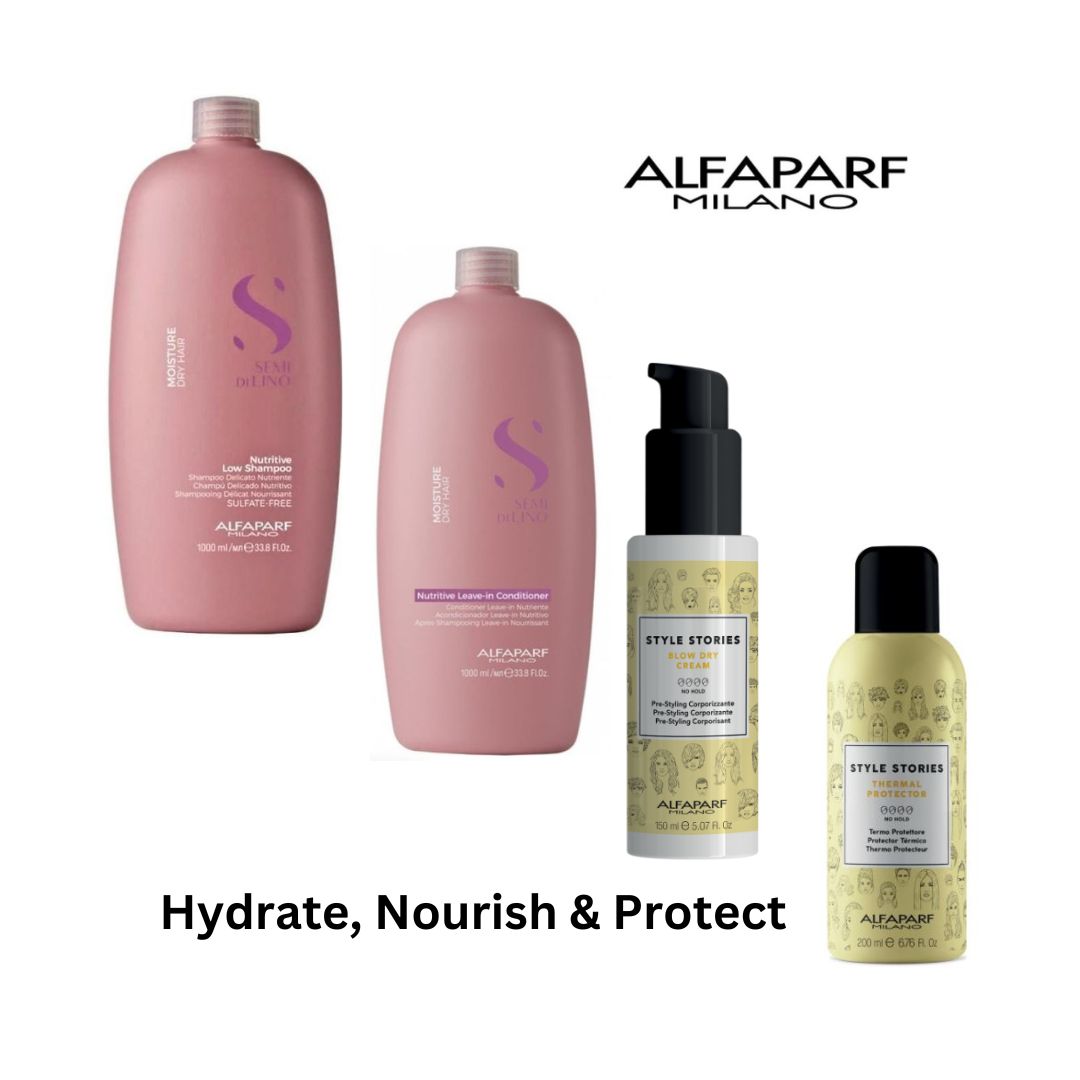Is it just a bad hair day, or is it my hormones? My Hair just goes incredibly greasy in one day or My hair gets completely dry and dull
A lighter thinner ponytail or an increase in hair loss when brushing / hairline receding / wider parting—a telltale sign of hormonal hair loss
Our Scalp & hair is dramatically affected during both the perimenopausal and post-menopausal years. The hormones involved—mainly estrogen and progesterone—affect your hair’s growth cycles, your scalp and follicle health, and the natural oils that keep hair smooth and lustrous. Because of that, you may experience thinning, lack of density, texture changes, and dryness as estrogen wanes or high levels of sebum during those hot flushes.
Sometimes your hair may look thicker and healthier; other times it may be thinner and duller.
When your menstrual cycle has stopped for an entire year, you’re officially in menopause—and those less desirable hair changes may be permanent.
what’s happening to our scalp and hair during pre-menopause and throughout menopause & how can we combat it
Whether you’re in perimenopause or have gone through menopause, you may experience the following hair changes.
Hair THINNING
As estrogen starts to decline, the delicate balance between estrogen and the hormone dihydrotestosterone (DHT), which is responsible for masculinizing changes such as hair loss, gets disrupted. Women who have a genetic predisposition to hair thinning may begin to see
a lighter thinner ponytail or an increase in hair loss when brushing / hairline receding / wider parting—a telltale sign of hormonal hair loss
Low estrogen levels can also affect your hair growth cycle, shortening the growth phase and delaying the stage when the hair regrows. Your hair follicles also miniaturize with age, so the strands coming out of them are finer, resulting in an overall lack of density.
DRY, DULL STRANDS
Just as your skin gets dry as estrogen is on the decline, your scalp and, by extension, your hair strands lack hydration, too. A reduction in estrogen results in reduced sebum (oil) production, which normally lubricates the scalp. The result is dry skin and a flaky scalp And, since that hydrating scalp oil isn’t there to work itself down your strands, hair is also drier, as well as duller, more brittle, and breakage-prone.
SCALP SENSITIVITY
Dryness can make a scalp cranky. The skin’s barrier (the outermost layer) forms tiny cracks when it’s dry, which allows irritants to get into it and cause inflammation. Also, if you’re experiencing hair thinning then your scalp is more exposed to environmental aggressors (such as UV rays) and harsh ingredients. This leads to more inflammation. and increased scalp sensitivity.
TEXTURE CHANGES
Hormones can affect the shape of some hair follicles, changing them from, say, circle-shaped follicles that produce straight hair to oval-shaped follicles that produce curly hair.
The coarse, wiry feel of some strands stems from the lack of natural oils. Sebum helps to maintain hair’s pH in a healthy acidic range. Acidity keeps the hair cuticle cells lying tightly against each other like slates on a roof. TEXTURE CHANGES can be due to change Sebum Levels that alter the natural scalp pH balance. Without the acidity, the cuticle cells begin to lift up and pull apart, leaving hair looking dull and feeling rough.
Pre-menopausal, menopausal & Post-menopausal Haircare routines for thinning hair / Dry-Dull hair / sensitive scalp / itchy flaky scalp / greasy scalp
ALFAPARF SCALP RENEW: for Thinning hair
Take care of your scalp, keep it balanced by using scalp rebalancing products
STIMULATE GROWTH
Massage the scalp often to maintain circulation and scalp health.
DRY, DULL STRANDS: for hair that is also drier, as well as duller, more brittle, and breakage-prone. ALFAPARF Moisture nutritive range
SCALP SENSITIVITY: ALFAPARF Calming
TEXTURE CHANGES due to change Sebum Levels that alter the natural scalp pH balance





















